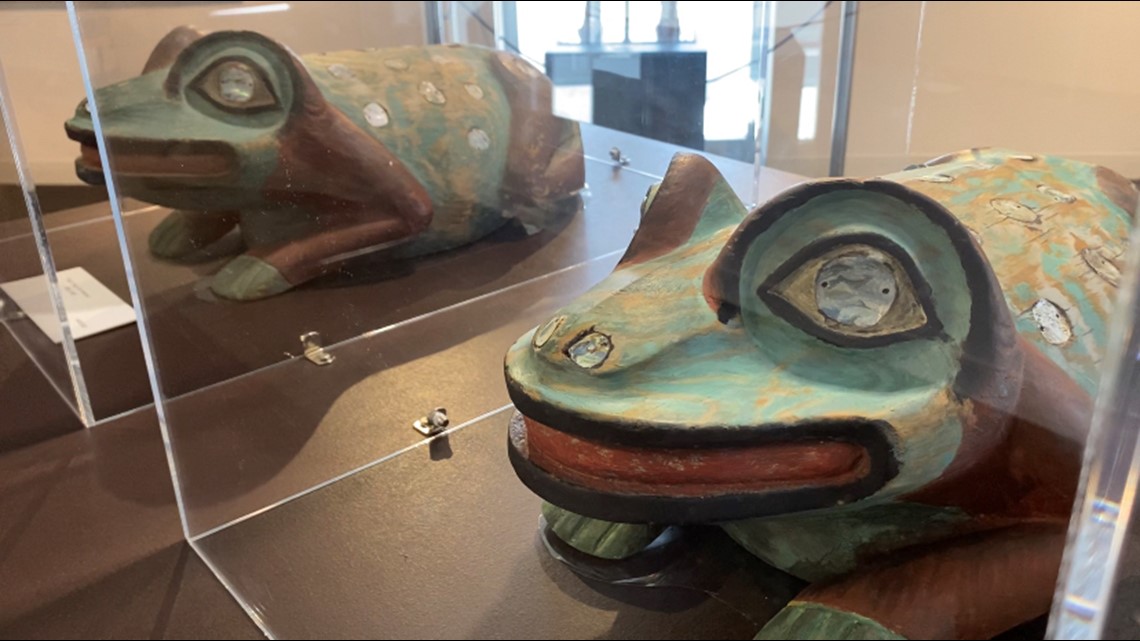ORONO, Maine — The Hudson Museum at the University of Maine houses hundreds of indigenous artifacts, and one 19th-century clan helmet is returning to its owners.
The Central Council of the Tlingit and Haida Indian Tribes of Alaska requested in 2018 that the museum return the 19th-century Tlingit frog clan helmet. However, prior to its return, the museum director and a team of engineers and artists sought to create a replica.
After a five-month process, the team has finished creating an identical replica. Side-by-side, the frog clan helmet and its replica sit in a new exhibit at the museum.


"They're actually painstakingly painted to match almost identically the original," Hudson Museum Director Gretchen Faulkner said.
The replication process involved scanning, digitizing, and 3D printing a prototype. UMaine Advanced Structures and Composites Center engineers Jonathan Roy and Alexander Cole created a thermoplastic prototype that was sanded down to a smooth finish.
Intermedia students Reed Hayden and Anna Martin collaborated on the model's finish, paint, and surface treatment to replicate the artifact's carving.
"My favorite part of the project was to watch Anna make the white thermoplastic replica come to life," Faulkner said.
The frog clan helmet is part of an ongoing request to return the artifact to the Indian Tribes of Alaska. Faulkner said the museum's next step is to begin the formal process of repatriating the artifact.
Until the process is complete, the original frog clan helmet and the identical replica will sit side-by-side in the Hudson Museum through early November.
Faulkner said this replication project allowed the museum to develop protocols for future replication projects and will serve as a model for other collecting institutions.
The helmet was gifted to UMaine in 1982 to continue a collector's legacy. William P. Palmer III was a collector of Mesoamerican artifacts who, at the time of his death, "held the largest private collection of Precolumbian art in North America."

